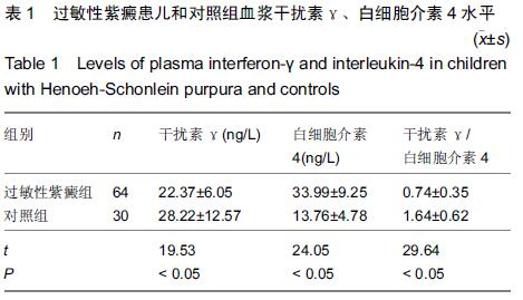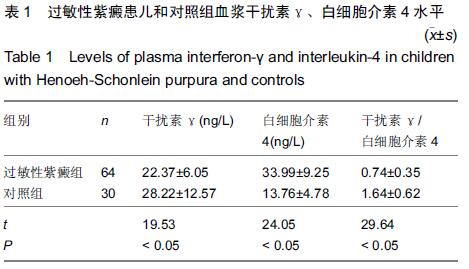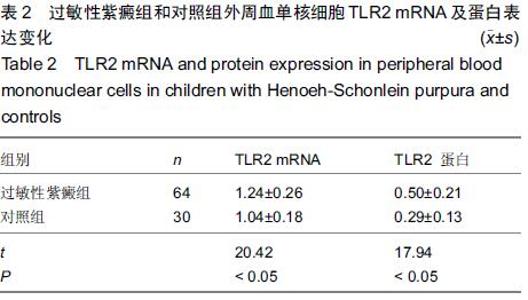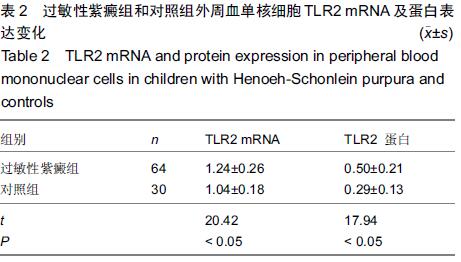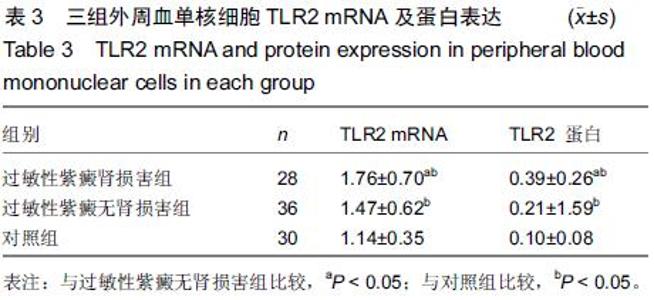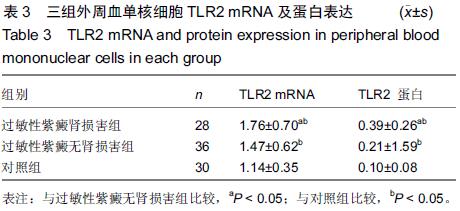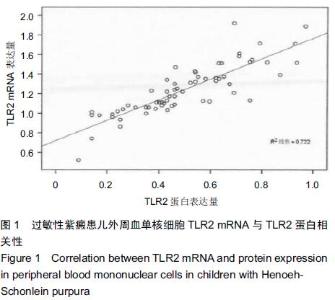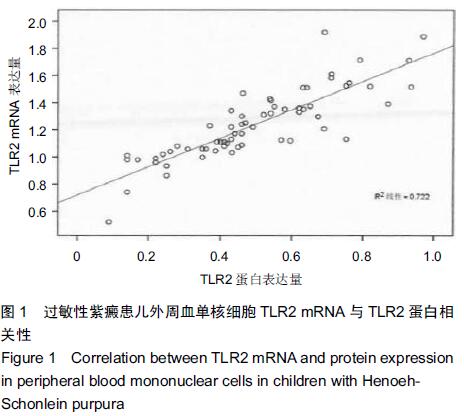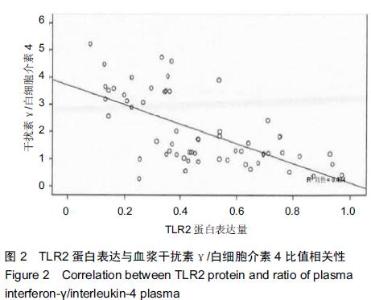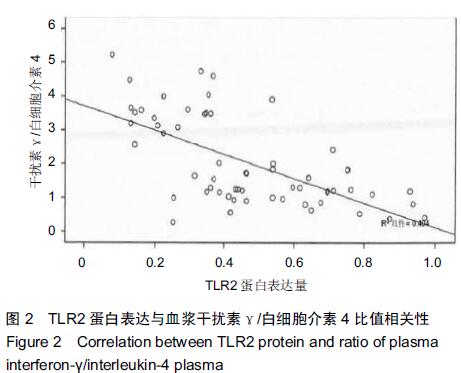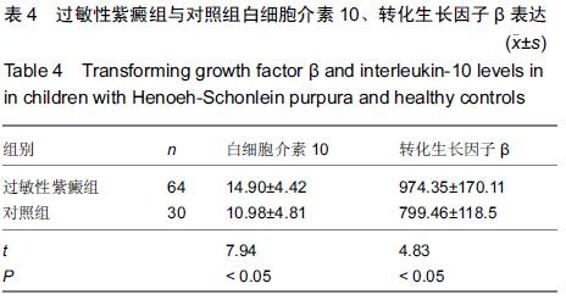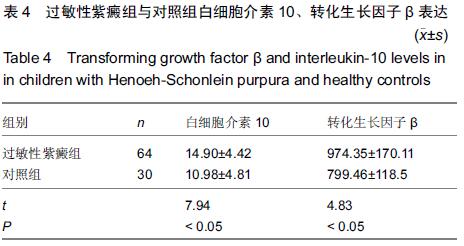Chinese Journal of Tissue Engineering Research ›› 2015, Vol. 19 ›› Issue (45): 7356-7361.doi: 10.3969/j.issn.2095-4344.2015.45.025
Previous Articles Next Articles
TLR2 expression in peripheral blood mononuclear cells of Henoeh-Schonlein purpura children and its association with immune response
Zhang Zi-li, Wang Gao-feng, Mei Dao-qi, Lin Peng-fei, Tian Ling
- The 152nd Hospital of PLA, Pingdingshan 467000, Henan Province, China
-
Received:2015-09-19Online:2015-11-05Published:2015-11-05 -
About author:Zhang Zi-li, Attending physician, the 152nd Hospital of PLA, Pingdingshan 467000, Henan Province, China
Cite this article
Zhang Zi-li, Wang Gao-feng, Mei Dao-qi, Lin Peng-fei, Tian Ling. TLR2 expression in peripheral blood mononuclear cells of Henoeh-Schonlein purpura children and its association with immune response[J]. Chinese Journal of Tissue Engineering Research, 2015, 19(45): 7356-7361.
share this article
|
[1] 中华医学会儿科学分会肾脏病学组. 儿童常见肾脏疾病诊治循证指南(二):紫癜性肾炎的诊治循证指南(试行)[J].中华儿科杂志, 2009,47(12): 911-913.
[2] 杨军,李成荣,祖莹,等.调节性T细胞在儿童过敏性紫癜发病机制中的作用初探[J].中华儿科杂志,2006,44(6):411-414.
[3] 董胜英,张秋业,刘伟,等.过敏性紫癜患儿急性期血浆转化生长因子-β1和血管内皮生长因子检测及其临床意义[J].中国实用儿科杂志,2004,19(11): 666-668.
[4] Yang YH, Wang SJ, Chuang YH, et al. The level of IgA antibodies to human umbilical vein endothelial cells can be enhanced by TNF-alpha treatment in children with Henoch- Schönlein purpura. Clin Exp Immunol. 2002;130(2): 352-357.
[5] Yang YH, Lai HJ, Huang CM, et al. Sera from children with active Henoch-Schönlein purpura can enhance the production of interleukin 8 by human umbilical venous endothelial cells. Ann Rheum Dis. 2004;63(11):1511-1513.
[6] 陈永兴. 过敏性紫癜病儿外周血树突状细胞共刺激分子表达及与Th1/Th2平衡的相关性研究[D].青岛: 青岛大学, 2007.
[7] Li M, Zhou Y, Feng G, et al. The critical role of Toll-like receptor signaling pathways in the induction and progression of autoimmune diseases. Curr Mol Med. 2009;9(3):365-374.
[8] Iwahashi M, Yamamura M, Aita T, et al. Expression of Toll-like receptor 2 on CD16+ blood monocytes and synovial tissue macrophages in rheumatoid arthritis. Arthritis Rheum. 2004; 50(5):1457-1467.
[9] 陶于洪,罗秋红. Toll样受体与肾脏疾病研究进展[J]实用儿科临床杂志,2012,27(17):1362-1365.
[10] 林珊,刘建梅,贾俊亚,等.Toll样受体4在糖尿病肾病患者肾小管中的表达及意义[J].临床荟萃,2010,25(8): 680-682.
[11] Pawar RD, Castrezana-Lopez L, Allam R, et al. Bacterial lipopeptide triggers massive albuminuria in murine lupus nephritis by activating Toll-like receptor 2 at the glomerular filtration barrier. Immunology. 2009;128(1 Suppl):e206-221.
[12] 庄琼冬,翁惠兰,汤银惠.饮食干预对过敏性紫癜患儿康复的影响[J].河北医学,2009,15(8):955-957.
[13] 戴慎,薛建国,岳沛平.中医病证诊疗标准与方剂选用[M].北京:人民卫生出版社,2003:113.
[14] 黄琼远,王瑷萍.桃红解毒化瘀汤治疗过敏性紫癜临床疗效观察[J].现代中西医结合杂志,2010,19(21):2616-2617.
[15] Coppo R, Camilla R, Amore A, et al. Toll-like receptor 4 expression is increased in circulating mononuclear cells of patients with immunoglobulin A nephropathy. Clin Exp Immunol. 2010;159(1):73-81.
[16] 李媛媛,李成荣,王国兵,等. Toll样受体信号途径异常活化在过敏性紫癜免疫发病机制中的作用初探[J].中华风湿病学杂志,2010, 14(8):538-542.
[17] Weighardt H, Holzmann B. Role of Toll-like receptor responses for sepsis pathogenesis. Immunobiology. 2007;212(9-10):715-722.
[18] Janssens S, Burns K, Vercammen E, et al. MyD88S, a splice variant of MyD88, differentially modulates NF-kappaB- and AP-1-dependent gene expression. FEBS Lett. 2003; 548(1-3): 103-107.
[19] Eisenbarth SC, Piggott DA, Huleatt JW, et al. Lipopolysaccharide-enhanced, toll-like receptor 4-dependent T helper cell type 2 responses to inhaled antigen. J Exp Med. 2002;196(12):1645-1651.
[20] 付劲蓉,李成荣,周玉峰,等.粘附分子在川崎病血管炎性损伤中的作用机制探讨[J].中华儿科杂志,2002,40(2):108-109.
[21] 王国兵,李成荣,祖莹,等.Toll样受体信号途径活化在川崎病免疫发病机制中的作用[J].中华儿科杂志,2006,44(5): 333-336.
[22] 程娜,常红,张秋业,等.幼年特发性关节炎49例临床分析[J].青岛大学医学院学报,2013,49(1): 73-75.
[23] 陈洪敏.链球菌感染与过敏性紫癜及肾损害的关系[J].江苏医药,2011,37(8): 978-979.
[24] 马莲美,贾秀红,王宝宏,等.过敏性紫癜并支原体感染患儿细胞免疫功能的研究[J].中华临床医师杂志:电子版,2011,5(11):3179- 3184.
[25] 仝桃玲.过敏性紫癜复发与幽门螺杆菌感染的关系[J].医药论坛杂志,2011,32(7):85-86.
[26] 陈小红,何芳,柳青,等.肾型过敏性紫癜患者血清IL-5、IL-10、CD+4CD+25调节性T细胞测定及意义[J].疑难病杂志,2013, 12(2): 140-141.
[27] 常红,张秋业,程娜,等. 过敏性紫癜患儿外周血单个核细胞 TLR2、TLR4表达及其与 Th1和 Th2型免疫应答相关性观察[J].中华微生物学和免疫学杂志,2013,33(11):839-844.
[28] Ozen S, Ruperto N, Dillon MJ, et al. EULAR/PReS endorsed consensus criteria for the classification of childhood vasculitides. Ann Rheum Dis. 2006;65(7):936-941.
[29] 孙丽萍,孙春荣,崔小岱,等.自身免疫性疾病患儿CD4+CD25+调节性T细胞的变化[J].实用儿科临床杂志,2009,24(9):664-665.
[30] Tamaki Y, Takakubo Y, Hirayama T, et al. Expression of Toll-like receptors and their signaling pathways in rheumatoid synovitis. J Rheumatol. 2011;38(5):810-820.
[31] Abdollahi-Roodsaz S, Joosten LA, Koenders MI, et al. Stimulation of TLR2 and TLR4 differentially skews the balance of T cells in a mouse model of arthritis. J Clin Invest. 2008;118(1):205-216.
[32] Spachidou MP, Bourazopoulou E, Maratheftis CI, et al. Expression of functional Toll-like receptors by salivary gland epithelial cells: increased mRNA expression in cells derived from patients with primary Sjögren's syndrome. Clin Exp Immunol. 2007;147(3):497-503.
[33] Kawakami A, Nakashima K, Tamai M, et al. Toll-like receptor in salivary glands from patients with Sjögren's syndrome: functional analysis by human salivary gland cell line. J Rheumatol. 2007;34(5):1019-1026.
[34] 赵梅青,赵洪国.敏性紫癜病人血清TGF-β1和HGF水平的变化[J].齐鲁医学杂志,2011,26(6):513-514.
[35] 唐雪梅.过敏性紫癜病因及免疫发病机制[J].实用儿科临床杂志, 2012,27(21):1634-1636.
[36] 吴容,王强,董巍. 过敏性紫癜患儿血浆IL-2、IFN-γ、IL-4与TGF-β1的变化及其意义[J].实用医院临床杂志,2014,11(1): 144-146.
[37] 姜晶,陆彪.过敏性紫癜患儿急性期血清IL-10、IL-13、IL-15水平的变化及意义[J].宁夏医科大学学报,2012,34(3): 225-228.
[38] 王兰英,张慧玉,岳爱红. 过敏性紫癜患儿血、尿TGF-β1检测及临床意义[J].现代预防医学,2010,37(7):1257-1259.
[39] Ishida H. Henoch-Schönlein purpura accompanied with myeloperoxidase-antineutrophil cytoplasmic antibody (MPO-ANCA) associated vasculitis with elevated serum interleukin-10. Nihon Naika Gakkai Zasshi. 2005;94(8): 1615-1617.
[40] Morgan ME, Koelink PJ, Zheng B,et al. Toll-like receptor 6 stimulation promotes T-helper 1 and 17 responses in gastrointestinal-associated lymphoid tissue and modulates murine experimental colitis. Mucosal Immunol. 2014; 7(5): 1266-1277.
|
| [1] | Zhang Tongtong, Wang Zhonghua, Wen Jie, Song Yuxin, Liu Lin. Application of three-dimensional printing model in surgical resection and reconstruction of cervical tumor [J]. Chinese Journal of Tissue Engineering Research, 2021, 25(9): 1335-1339. |
| [2] | Zeng Yanhua, Hao Yanlei. In vitro culture and purification of Schwann cells: a systematic review [J]. Chinese Journal of Tissue Engineering Research, 2021, 25(7): 1135-1141. |
| [3] | Xu Dongzi, Zhang Ting, Ouyang Zhaolian. The global competitive situation of cardiac tissue engineering based on patent analysis [J]. Chinese Journal of Tissue Engineering Research, 2021, 25(5): 807-812. |
| [4] | Wu Zijian, Hu Zhaoduan, Xie Youqiong, Wang Feng, Li Jia, Li Bocun, Cai Guowei, Peng Rui. Three-dimensional printing technology and bone tissue engineering research: literature metrology and visual analysis of research hotspots [J]. Chinese Journal of Tissue Engineering Research, 2021, 25(4): 564-569. |
| [5] | Chang Wenliao, Zhao Jie, Sun Xiaoliang, Wang Kun, Wu Guofeng, Zhou Jian, Li Shuxiang, Sun Han. Material selection, theoretical design and biomimetic function of artificial periosteum [J]. Chinese Journal of Tissue Engineering Research, 2021, 25(4): 600-606. |
| [6] | Liu Fei, Cui Yutao, Liu He. Advantages and problems of local antibiotic delivery system in the treatment of osteomyelitis [J]. Chinese Journal of Tissue Engineering Research, 2021, 25(4): 614-620. |
| [7] | Li Xiaozhuang, Duan Hao, Wang Weizhou, Tang Zhihong, Wang Yanghao, He Fei. Application of bone tissue engineering materials in the treatment of bone defect diseases in vivo [J]. Chinese Journal of Tissue Engineering Research, 2021, 25(4): 626-631. |
| [8] | Zhang Zhenkun, Li Zhe, Li Ya, Wang Yingying, Wang Yaping, Zhou Xinkui, Ma Shanshan, Guan Fangxia. Application of alginate based hydrogels/dressings in wound healing: sustained, dynamic and sequential release [J]. Chinese Journal of Tissue Engineering Research, 2021, 25(4): 638-643. |
| [9] | Chen Jiana, Qiu Yanling, Nie Minhai, Liu Xuqian. Tissue engineering scaffolds in repairing oral and maxillofacial soft tissue defects [J]. Chinese Journal of Tissue Engineering Research, 2021, 25(4): 644-650. |
| [10] | Xing Hao, Zhang Yonghong, Wang Dong. Advantages and disadvantages of repairing large-segment bone defect [J]. Chinese Journal of Tissue Engineering Research, 2021, 25(3): 426-430. |
| [11] | Chen Siqi, Xian Debin, Xu Rongsheng, Qin Zhongjie, Zhang Lei, Xia Delin. Effects of bone marrow mesenchymal stem cells and human umbilical vein endothelial cells combined with hydroxyapatite-tricalcium phosphate scaffolds on early angiogenesis in skull defect repair in rats [J]. Chinese Journal of Tissue Engineering Research, 2021, 25(22): 3458-3465. |
| [12] | Wang Hao, Chen Mingxue, Li Junkang, Luo Xujiang, Peng Liqing, Li Huo, Huang Bo, Tian Guangzhao, Liu Shuyun, Sui Xiang, Huang Jingxiang, Guo Quanyi, Lu Xiaobo. Decellularized porcine skin matrix for tissue-engineered meniscus scaffold [J]. Chinese Journal of Tissue Engineering Research, 2021, 25(22): 3473-3478. |
| [13] | Mo Jianling, He Shaoru, Feng Bowen, Jian Minqiao, Zhang Xiaohui, Liu Caisheng, Liang Yijing, Liu Yumei, Chen Liang, Zhou Haiyu, Liu Yanhui. Forming prevascularized cell sheets and the expression of angiogenesis-related factors [J]. Chinese Journal of Tissue Engineering Research, 2021, 25(22): 3479-3486. |
| [14] | Liu Chang, Li Datong, Liu Yuan, Kong Lingbo, Guo Rui, Yang Lixue, Hao Dingjun, He Baorong. Poor efficacy after vertebral augmentation surgery of acute symptomatic thoracolumbar osteoporotic compression fracture: relationship with bone cement, bone mineral density, and adjacent fractures [J]. Chinese Journal of Tissue Engineering Research, 2021, 25(22): 3510-3516. |
| [15] | Liu Liyong, Zhou Lei. Research and development status and development trend of hydrogel in tissue engineering based on patent information [J]. Chinese Journal of Tissue Engineering Research, 2021, 25(22): 3527-3533. |
| Viewed | ||||||
|
Full text |
|
|||||
|
Abstract |
|
|||||
